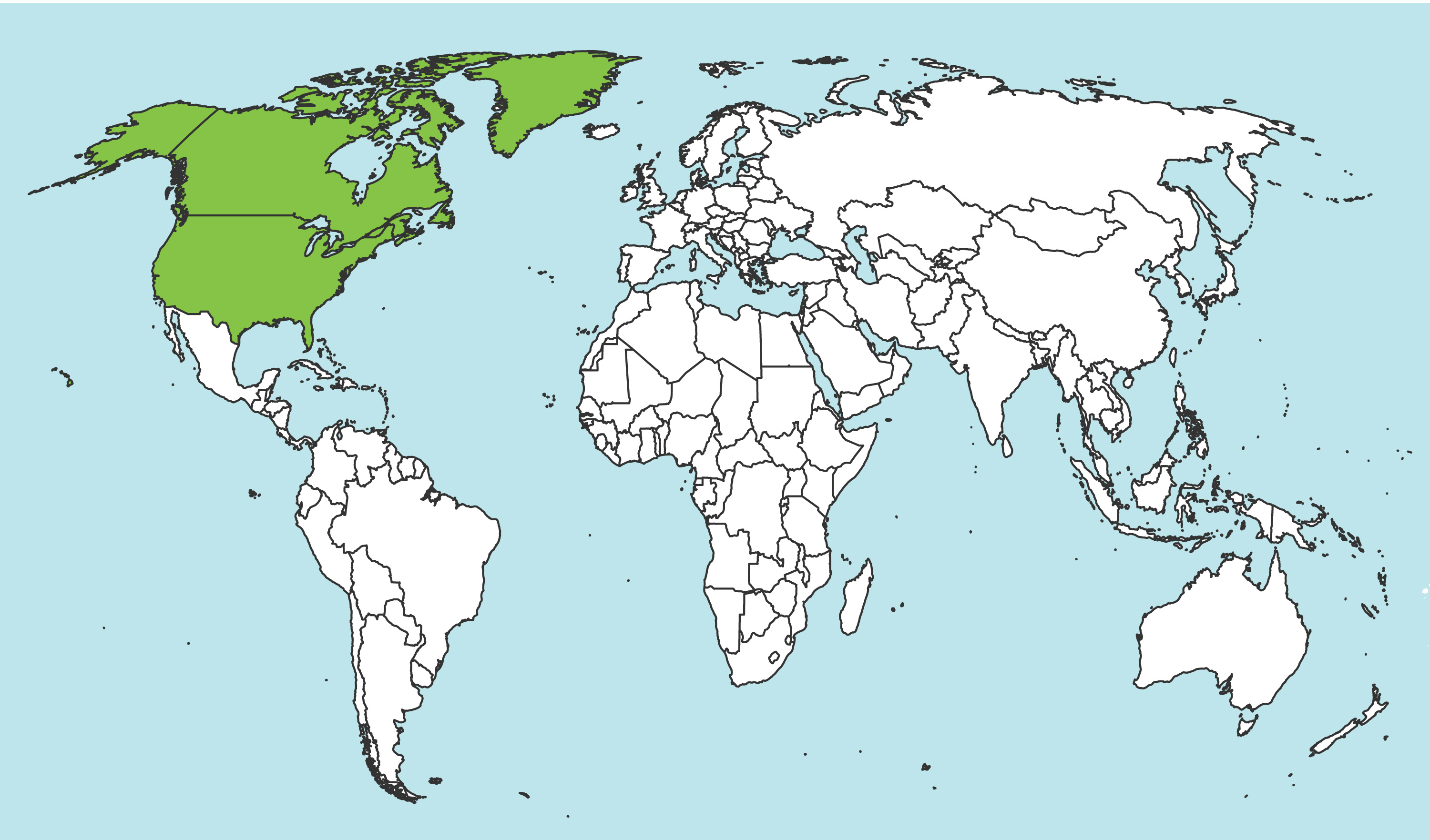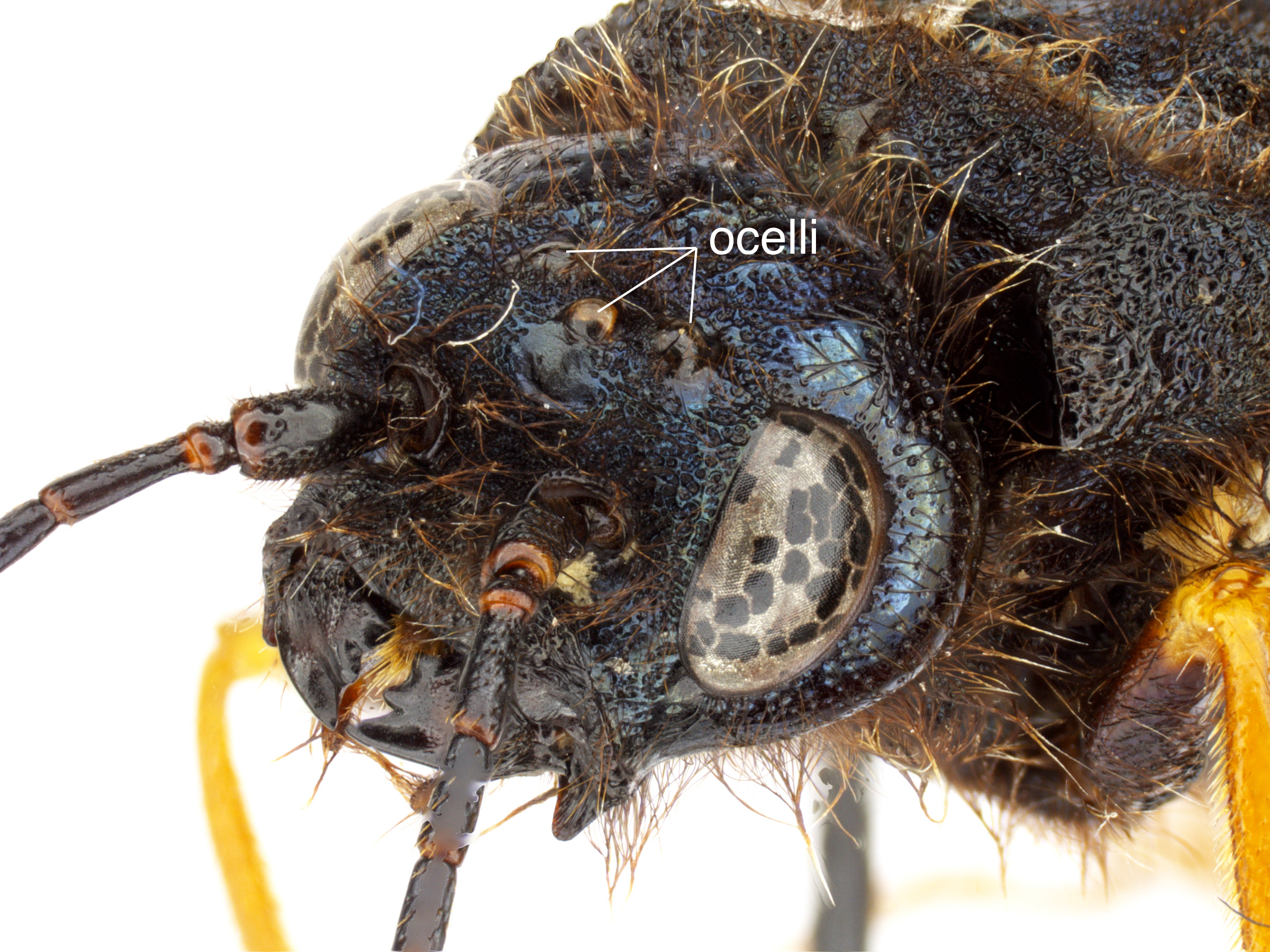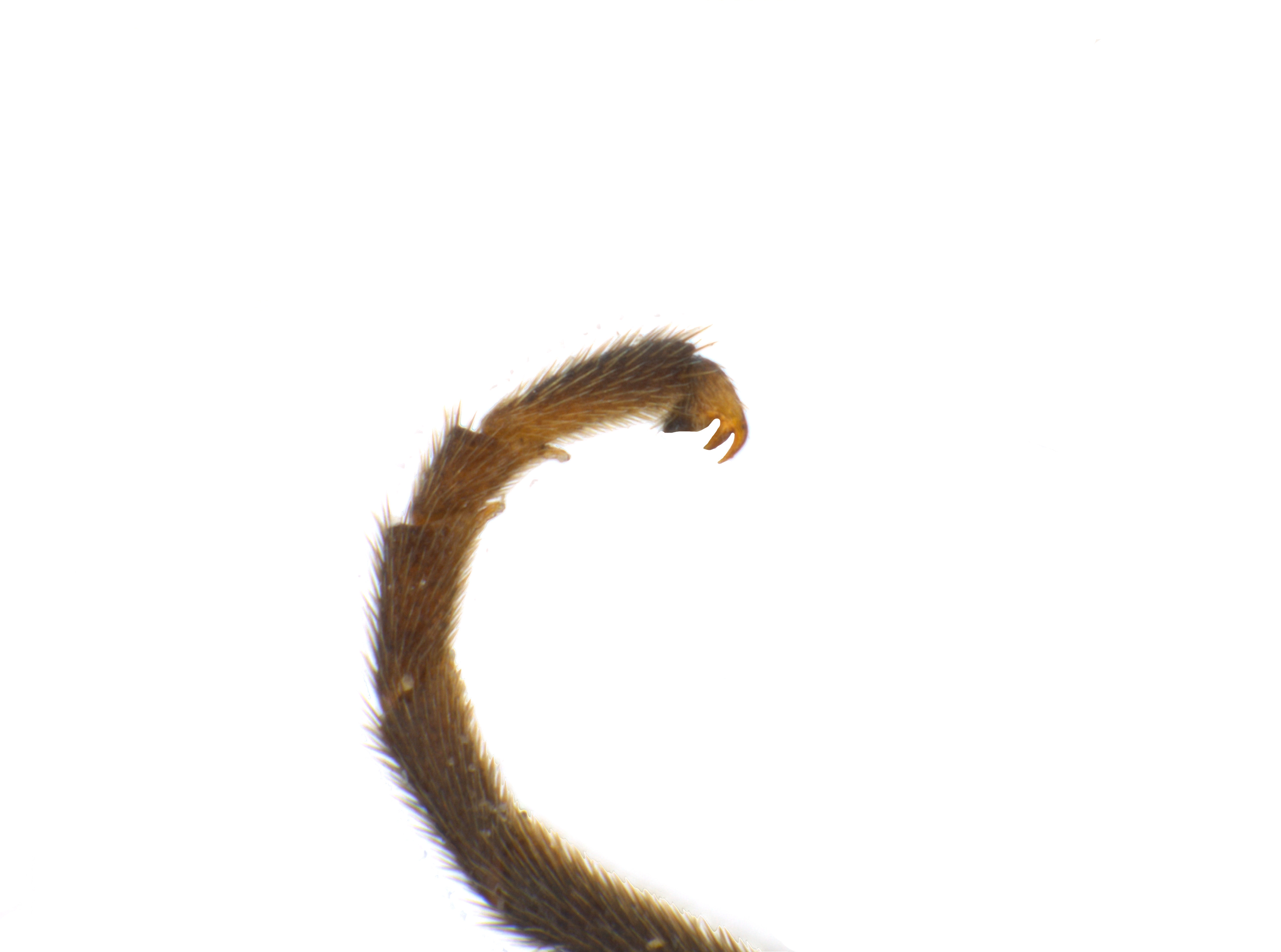Family: Tenthredinidae
Family common name: common sawflies
Subfamily: Allantinae
Tribe: Allantini
Genus: Taxonus Hartig, 1837
Subgenera: none
The Tenthredinidae are the most species-rich family and are found throughout the world, in all continents but Antarctica. They are known as the “common sawflies.” They can generally be recognized by a cylindrical body and long, segmented antennaeantenna:
the sensory organ emerging from the front of the head, usually between the compound eyes and above the clypeus; includes the flagellum, scape and pedicel
 . Otherwise, they come in a variety of colors, sizes, and forms (Goulet 1992Goulet 1992:
. Otherwise, they come in a variety of colors, sizes, and forms (Goulet 1992Goulet 1992:
Goulet H. 1992. The genera and subgenera of the sawflies of Canada and Alaska: Hymenoptera. Symphyta. The insects and arachnids of Canada. Part 20. Agriculture Canada Publication.).
Sawflies in the Allantinae subfamily are mostly black and shining, sometimes with other colors. They have agricultural importance as some species are pests on cultivated and ornamental plants (Smith 1979aSmith 1979a:
Smith DR. 1979a. Nearctic sawflies. IV. Allantinae: Adults and larvae (Hymenoptera: Tenthredinidae). Technical Bulletin, U.S. Department of Agriculture 1595: 1-172.). They can be distinguished from other subfamilies by wing venationvenation:
the network of veins on a wing
(Smith 2003aSmith 2003a:
Smith DR. 2003a. A Synopsis of the sawflies (Hymenoptera: Symphyta) of America south of the United States: Tenthredinidae (Allantinae). Journal of Hymenoptera Research 12 (1): 148-192.).
Taxonus are medium-sized, about 5–10 mm in length, and generally black and orange in color. The genus is species-rich worldwide. (Smith 1979aSmith 1979a:
Smith DR. 1979a. Nearctic sawflies. IV. Allantinae: Adults and larvae (Hymenoptera: Tenthredinidae). Technical Bulletin, U.S. Department of Agriculture 1595: 1-172.).
There are 62 described extantextant:
in existence; opposite of extinct
species worldwide. Nine occur in North America (Taeger et al. 2010Taeger et al. 2010:
Taeger A, Blank SM, and Liston AD. 2010. World Catalog of Symphyta (Hymenoptera). Zootaxa 2580: 1-1064.).
A NearcticNearctic:
describing the region of the Northern Hemisphere that includes North America south through northern Mexico
 key to species is included in Smith 1979aSmith 1979a:
key to species is included in Smith 1979aSmith 1979a:
Smith DR. 1979a. Nearctic sawflies. IV. Allantinae: Adults and larvae (Hymenoptera: Tenthredinidae). Technical Bulletin, U.S. Department of Agriculture 1595: 1-172..
Subfamily characters
 vein M and 1m-cu parallel (Smith 1979aSmith 1979a:
vein M and 1m-cu parallel (Smith 1979aSmith 1979a: vein 2A+3A complete, connected to 1A by crossveincrossvein:
vein 2A+3A complete, connected to 1A by crossveincrossvein:Genus characters
 deeply notched, circularly emarginated (Smith 1979aSmith 1979a:
deeply notched, circularly emarginated (Smith 1979aSmith 1979a: (Smith 1979aSmith 1979a:
(Smith 1979aSmith 1979a: vein 2r present (Smith 1979aSmith 1979a:
vein 2r present (Smith 1979aSmith 1979a: vein M intersecting Sc+R at the intersection of Sc+R and Rs+M (Smith 1979aSmith 1979a:
vein M intersecting Sc+R at the intersection of Sc+R and Rs+M (Smith 1979aSmith 1979a: cellcell:
cellcell: M present (Smith 1979aSmith 1979a:
M present (Smith 1979aSmith 1979a: with peripheral veinvein:
with peripheral veinvein: present (Smith 1979aSmith 1979a:
present (Smith 1979aSmith 1979a: bifidbifid:
bifidbifid: with basalbasal:
with basalbasal:Taxonus can be confused with similar species in the subfamily Allantinae or tribe Allantini. It can be distinguished from most other genera by the asymmetrical mandibles, deep circular clypeusclypeus:
sclerotized area on the front of the head located between the antennal insertions and labrum
 emargination, presence of cellcell:
emargination, presence of cellcell:
1. a membranous area of the wing between veins, 2. a small cavity or closed space
 M in the hind winghind wing:
M in the hind winghind wing:
the posterior wing of each pair of wings
 , and male peripheral veinvein:
, and male peripheral veinvein:
a tube-like, often darkened, structure on the wings
 I hind winghind wing:
I hind winghind wing:
the posterior wing of each pair of wings
 (Smith 1979aSmith 1979a:
(Smith 1979aSmith 1979a:
Smith DR. 1979a. Nearctic sawflies. IV. Allantinae: Adults and larvae (Hymenoptera: Tenthredinidae). Technical Bulletin, U.S. Department of Agriculture 1595: 1-172.).
none
In North America, Taxonus feeds on species of Fragaria (strawberry) and Rubus (blackberry, raspberry) (Smith 1979aSmith 1979a:
Smith DR. 1979a. Nearctic sawflies. IV. Allantinae: Adults and larvae (Hymenoptera: Tenthredinidae). Technical Bulletin, U.S. Department of Agriculture 1595: 1-172.).
Specific biology for Taxonus species is unknown. LarvaeLarva:
the immature stage of holometabolous insects
 feed singly on the underside of the leaf. At maturity prepupae burrow into the soil beneath the host to pupate. Taxonus pallicoxus and T. pallidicornis are bivoltinebivoltine:
feed singly on the underside of the leaf. At maturity prepupae burrow into the soil beneath the host to pupate. Taxonus pallicoxus and T. pallidicornis are bivoltinebivoltine:
describing a life cycle with two generations per calendar year
(Smith 1979aSmith 1979a:
Smith DR. 1979a. Nearctic sawflies. IV. Allantinae: Adults and larvae (Hymenoptera: Tenthredinidae). Technical Bulletin, U.S. Department of Agriculture 1595: 1-172.).
World: This genus is known from North America, Europe, and throughout Asia (Smith 1979aSmith 1979a:
Smith DR. 1979a. Nearctic sawflies. IV. Allantinae: Adults and larvae (Hymenoptera: Tenthredinidae). Technical Bulletin, U.S. Department of Agriculture 1595: 1-172., Taeger et al. 2010Taeger et al. 2010:
Taeger A, Blank SM, and Liston AD. 2010. World Catalog of Symphyta (Hymenoptera). Zootaxa 2580: 1-1064.).
North America: Taxonus occurs mainly east of the Mississippi River, south to Texas and Florida. There are a few collections of T. pallicoxus in Alberta and British Columbia (Smith 1979aSmith 1979a:
Smith DR. 1979a. Nearctic sawflies. IV. Allantinae: Adults and larvae (Hymenoptera: Tenthredinidae). Technical Bulletin, U.S. Department of Agriculture 1595: 1-172.).
Map data from: GBIF.org (29 October 2019) GBIF Occurrence Download Taxonus
Details about data used for maps can be found here.